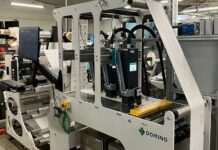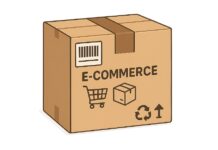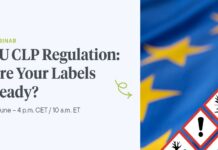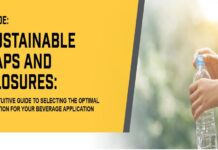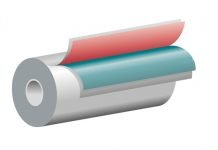Temperature excursions pertain to the phenomenon of temperature deviation from the designated range necessary for the safe and efficient storage or transport of temperature-sensitive goods. Temperature excursions are a major risk to industries like drugs, biotech, food, and chemicals, where the product efficacy, safety, and quality are determined by having a specific set of environmental conditions.
Understanding of the causes, identification of the risks, and adoption of measures to avoid temperature excursions are necessary to protect high-value products and maintain compliance with regulations. With the development of monitoring technologies and best-practice guidelines, organizations are able to efficiently manage temperature-controlled environments and address excursions’ associated risks.
Causes of Temperature Excursions
Temperature excursions are caused by multiple factors that interfere with the controlled conditions needed for vulnerable products. Such factors usually occur during storage, handling, or transport, subjecting products to conditions that threaten their integrity, which helps in temperature excursion prevention.
-
Infrastructure and Equipment Failure
One of the most frequent temperature excursions is caused by the malfunction of critical infrastructure, like cold storage facilities, freezers, or refrigerated trucks. Malfunctions in equipment, compressor faults, failure of door seals, and inefficiency of compressor cooling can cause temperature deviations. For instance, a faulty compressor in a cold storage facility could mean a slow increase in temperature, jeopardizing stored vaccines against spoilage.
Equipment that is ageing and/or not well-maintained increases the likelihood of equipment failure. Storage and transportation equipment that is not routinely inspected and serviced can likely experience breakdowns and create excursions.
-
Operational Errors
Temperature excursions are also caused by human error while handling, loading, or unloading temperature-sensitive products. Localized temperature excursions can result from improper door openings, extended loading duration and improper product placement in storage.
For example, leaving the door of a refrigerated truck wide open when loading will allow warm air to enter and create a temporary excursion. Also, not locating the product far enough away from cooling vents can result in non-uniform temperature distribution, which can impact a product’s integrity.
-
Environmental Factors
External weather conditions, such as severe temperatures, cold, or humidity, make it difficult to maintain temperature-controlled environments, especially while in transit. For example, a refrigerated vehicle carrying a perishable item travelling through a hot climate may lose enough cooling ability if poorly insulated.
Environmental conditions are particularly important for international logistics operations where shipments may go through more than one climate or weather pattern. Seasonal changes and unpredictable weather events further increase the challenge of keeping excursions from occurring.
Chart: Common Causes of Temperature Excursions
| Cause | Example |
| Infrastructure Failure | Malfunctioning refrigeration units or freezers |
| Operational Errors | Leaving doors open for too long during loading/unloading |
| Environmental Conditions | Exposure to extreme heat or cold during transit |
Risks Associated with Temperature Excursions
The consequences of temperature excursions go beyond financial losses; they also bring into peril’s way human safety, regulatory compliance, and reputational risk.
-
Product Degradation
Temperature excursions undermine the chemical and physical stability of sensitive products. In pharmaceuticals, for instance, extended exposure to temperatures outside of prescribed specifications can weaken active ingredients and make drugs ineffective or even toxic.
In a similar manner, in the food sector, excursions speed up spoilage processes to cause a change in texture, flavour, and safety. For frozen foods, thawing and refreezing during an excursion can produce ice crystals that will destroy the quality of the product.
-
Regulatory and Legal Implications
Regulatory authorities have specific requirements for storage/transportation conditions for temperature-controlled commodities. Not meeting requirements as a result of temperature excursions could result in steep fines, product recalls or loss of marketing license.
In the case of the pharmaceutical industry, cold chain integrity is required to preserve vaccines and biologics at regulatory levels. Temperature excursion events that contaminate these products may require the investment of expensive investigations and reporting to regulatory agencies.
-
Financial and Reputational Damage
The monetary effect of temperature excursions consists of product losses, logistics interruption, and extra quality assurance expenses. To businesses with thin margins, these losses can be ruinous.
Equally significant is reputational harm that occurs due to perceived failures in the quality of the products. Customers and stakeholders expect consistency in the storage and delivery of temperature-sensitive products, and frequent occurrences of excursions wear away trust and brand equity.
5 Ways to Prevent Temperature Excursions
Preventing temperature excursions involves a complex approach that includes integrated technologies, best-practice operating procedures, and a proactive risk management approach.
-
Advanced Monitoring and Tracking Systems
The use of the Internet of Things (IoT) has transformed temperature monitoring and tracking in warehousing and shipping. IoT-based sensors offer real-time information on key parameters like temperature, humidity, and location, providing end-to-end visibility.
For instance, a pharmaceutical firm exporting vaccines across global borders can utilize IoT sensors to monitor the temperature of their shipment in real-time. If the temperature starts increasing because of a failure in the cooling mechanism, the system sends an instant notification so that logistics departments can take preventive measures and avoid a full-blown excursion.
-
Predictive Maintenance for Equipment Reliability
Preventing equipment failures that lead to temperature excursions begins with predictive maintenance. The application of IoT sensors and AI-based analytics allows operators to assess the condition of their refrigeration and cooling units in real-time.
For example, sensors in a cold storage facility can monitor unusual patterns in compressor performance, pressure, or energy usage. Predictive codes scan these patterns to predict possible failures, which allow maintenance crews to troubleshoot before temperature control is disrupted.
-
Robust Standard Operating Procedures (SOPs)
Operating procedures are important in the avoidance of human mistakes resulting in temperature deviations. SOPs must provide guidelines for the handling, loading, unloading, and temperature monitoring of sensitive products to maintain uniformity.
For instance, logistics firms can have SOPs in place that call for employees to reduce door-open times for cold storage containers and employ thermal curtains in order to keep internal temperatures consistent. Moreover, driver training courses can teach staff members how to preserve the integrity of temperature-controlled cargo while in transit.
-
Insulation and Packaging Innovations
Innovative packaging and insulation solutions are critical for minimizing environmental threats during transport. PCMs, insulated packages, and advanced thermal blankets ensure constant temperature levels even in unfavourable conditions.
For instance, PCMs used in packaging solutions absorb or release heat according to requirements to ensure specified temperature ranges during transport. PCMs shield products against temperature surges due to harsh weather or transportation delays.
Table 1: Best Practices for Preventing Temperature Excursions
| Preventive Measure | Description |
| IoT-Enabled Sensors | Real-time temperature monitoring and alerts |
| Predictive Maintenance | Prevents refrigeration equipment failures |
| Insulation Technology | Maintains stable temperatures during transit |
| SOP Implementation | Ensures consistent handling and operational practices |
- Data Analytics and Risk Management
Historical data on temperature excursions analyzed by organizations enable them to recognize patterns and weaknesses within their supply chains. For instance, analysis could indicate that excursions are recurrent in certain transit routes or seasons, calling for focused mitigation strategies.
Besides retrospective analysis, predictive analysis enables businesses to anticipate threats by modelling different scenarios. For example, based on weather predictions and past performance, predictive models can suggest alternative routes or means of shipping to avoid risks during heat waves.
Future Advancements in Temperature Excursion Prevention
With technology moving forward, new developments are already coming up to further advance temperature excursion prevention.
One encouraging trend is the application of digital twins—computer replicas of physical supply chain assets. Digital twins allow for the simulation in real-time of shipping and storage conditions, which gives operators the ability to detect weaknesses and simulate mitigations before actual deployment.
Another trend is the use of blockchain technology to increase traceability and accountability. Blockchain provides an unalterable history of temperature data along the supply chain, providing transparency and allowing quick tracing of responsible parties in case of an excursion.
Sustainability is also emerging as a central concern in temperature-controlled logistics. Businesses are investigating energy-saving refrigeration systems and reusable packaging materials to minimize the environmental footprint of preserving the cold chain.
Conclusion
Temperature excursions are a serious problem for industries handling sensitive products that need to be kept under specific environmental conditions. From plant failures and process errors to environmental conditions, the reasons for excursions are multifaceted and diverse. Whatever the reasons, the dangers they bring about, from product degradation to regulatory non-compliance, are too critical to be downplayed.
By leveraging the implementation of advanced monitoring systems, proactive maintenance approaches, and sound operating procedures, organizations can readily avert temperature excursions and ensure product integrity. The incorporation of new technologies like digital twins and blockchain also improves risk anticipation and mitigation capabilities.
With increasing demand for temperature-sensitive products, investing in temperature excursion prevention is not only a necessity but also a competitive edge. Through the intersection of innovation and best practices, companies can guarantee their products’ safe delivery to consumers, with efficiency and in an optimal condition. Such a quality and reliability focus bolsters trust, improves brand value, and aids global aspirations of an efficient and sustainable supply chain.












